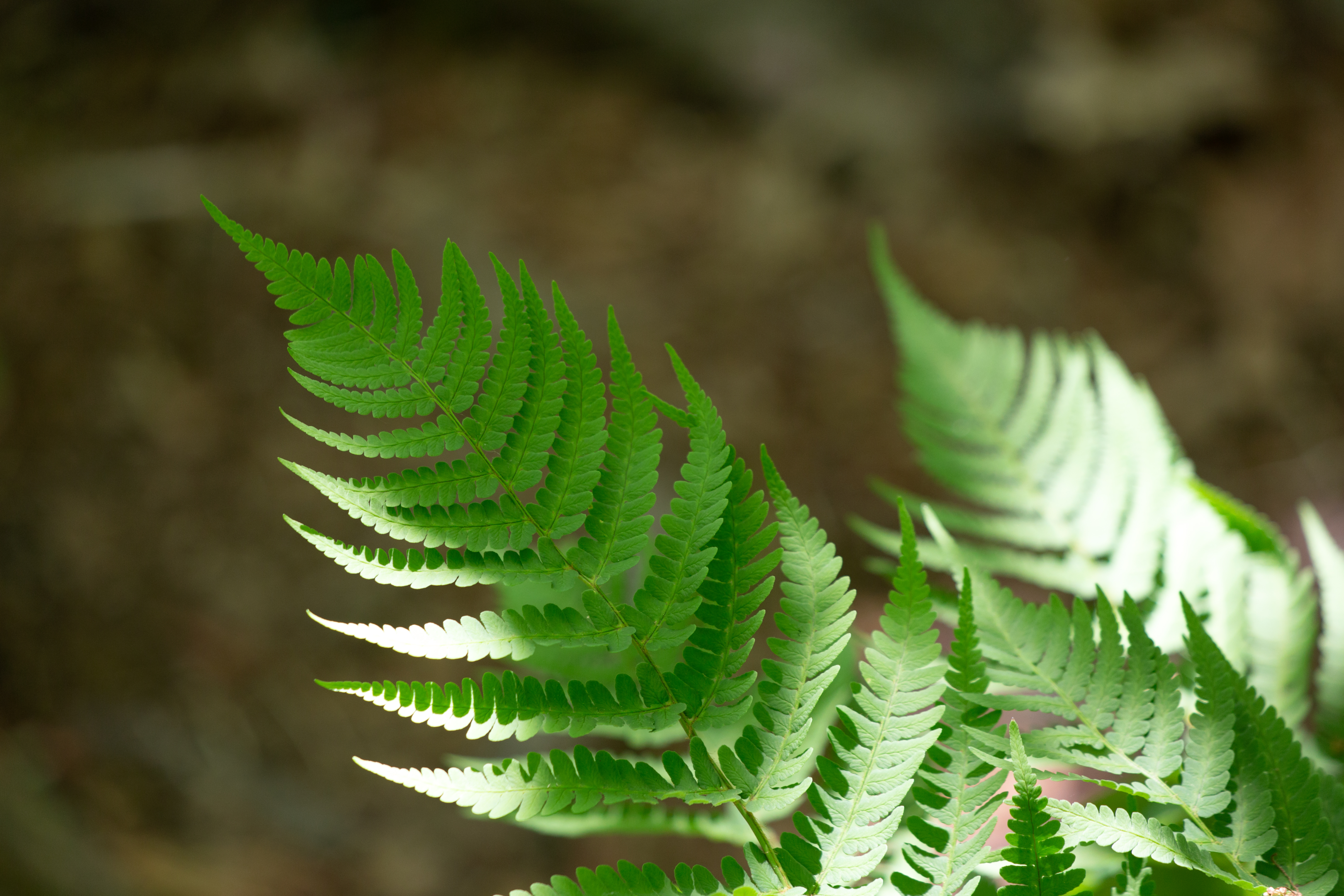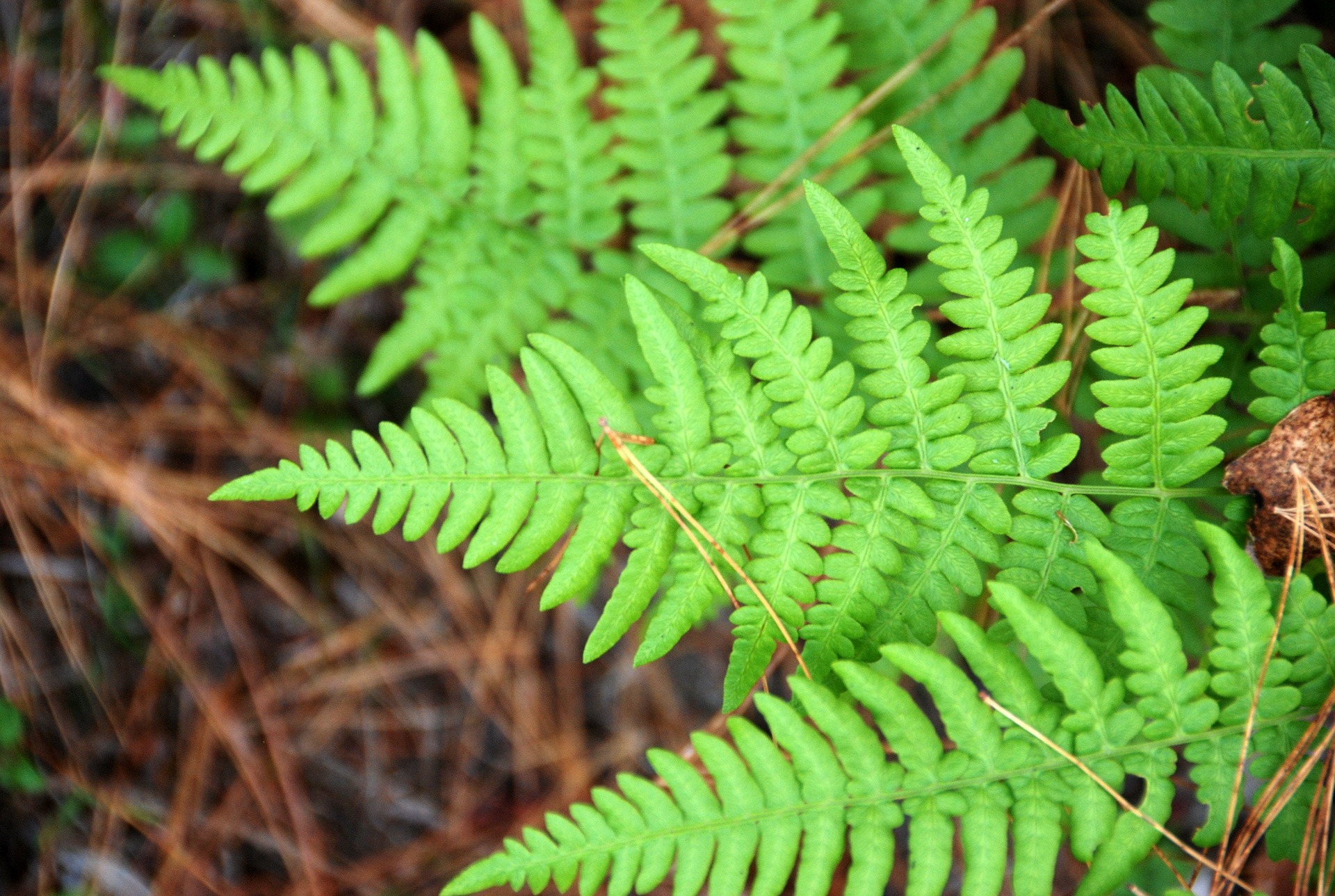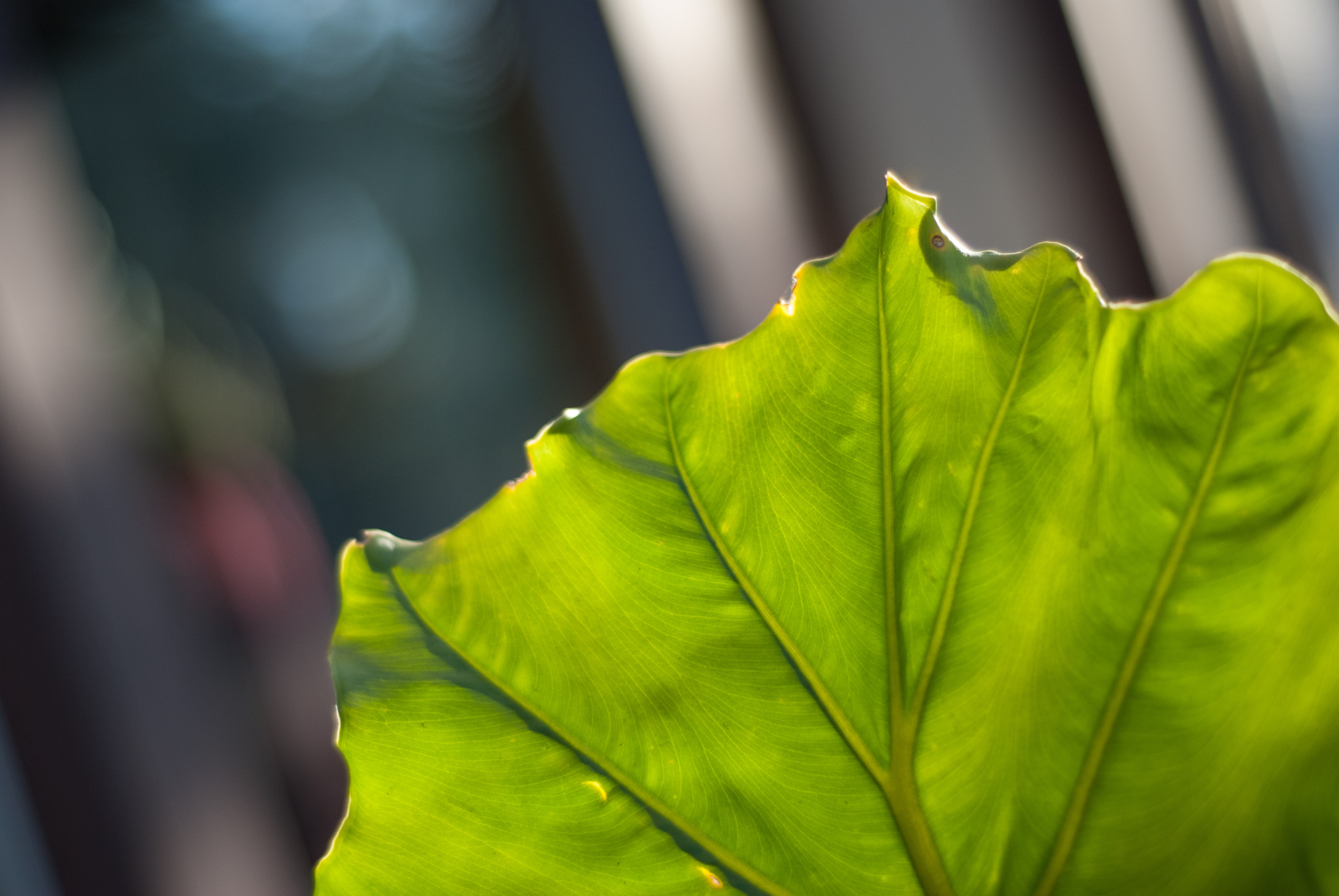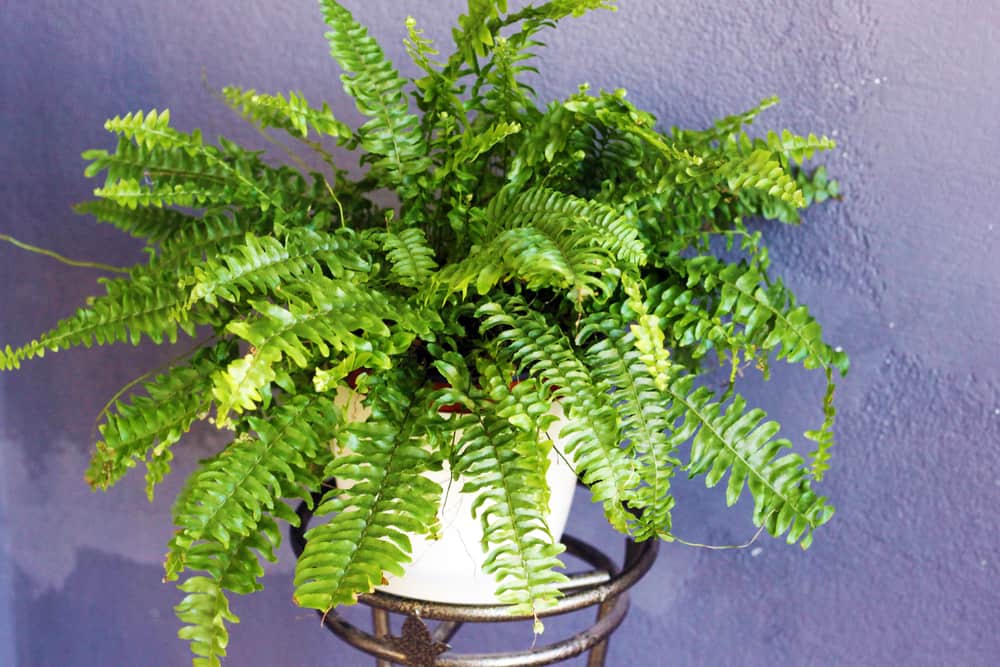HousePlantJoy is supported by our audience. When you purchase through one of our links, we may earn a small affiliate commission. As an Amazon Associate I earn from qualifying purchases. Your cost is not affected.
==================
Pteris cretica “albo fern” is a popular houseplant that is native to Europe, Asia, and Africa. It is a slow-growing evergreen fern that typically grows up to 18-24 inches tall and as wide. The plant has arching pale green fronds, each with 1-5 pairs of simple or forked pinnae, and a graceful appearance.
The Pteris cretica “albo fern” is also known as the silver ribbon fern, Cretan brake fern, or Cretan fern. It is the most common variant of the Pteris cretica species, with a cream-white center and white lateral veins. The plant seems to prefer bright light without direct sunlight and requires moist soil at all times.
If you are looking for a low-maintenance houseplant that is easy to care for, the Pteris cretica “albo fern” is an excellent choice. Not only does it add a touch of green to your home, but it also helps purify the air by removing harmful pollutants. With its unique and eye-catching appearance, this fern is sure to be a conversation starter among your guests.
Pteris Cretica ‘Albo Fern’ Overview
Pteris Cretica ‘Albo Fern’ is a popular houseplant that belongs to the Pteris genus. It is also known as the Silver Ribbon Fern due to its unique variegation. The plant is native to the Mediterranean region, including Greece, Turkey, and North Africa.
The Pteris Cretica ‘Albo Fern’ is an evergreen fern that can grow up to 18-24 inches tall and wide. It has arching fronds that are pale green in color with a stripe of creamy variegation. The fronds are uniquely shaped with 1-5 pairs of simple or forked pinnae.
The Pteris Cretica ‘Albo Fern’ is a slow-growing plant that requires low to medium light. It thrives in well-draining soil and humid conditions. The plant prefers to be kept moist but not waterlogged. Overwatering can lead to root rot, so it is important to allow the soil to dry slightly before watering again.
This fern is relatively easy to care for and is an excellent addition to any indoor plant collection. It can be propagated by division, and new growth can be expected in the spring and summer months.
Overall, the Pteris Cretica ‘Albo Fern’ is a beautiful and unique houseplant that can add a touch of elegance to any home. With proper care, it can thrive for many years, providing its owners with a stunning display of variegated fronds.
Origins and Habitat
Pteris cretica ‘albo fern’ is a slow-growing evergreen fern that is native to Europe, Asia, and Africa. It is a variant of the Pteris cretica species and is also known as the Cretan brake fern, silver ribbon fern, silver ribbon fern, or Cretan fern.
The plant gets its name from the Greek word for fern, “Pteris,” and the Latin word for the beautiful Grecian island of Crete, “Cretica.” The species is so named because it is commonly found growing in the wild in Crete.
In its natural habitat, Pteris cretica ‘albo fern’ grows in rocky crevices, on shaded slopes, and in open woodlands. It prefers moist, well-draining soil and bright, indirect light. The plant can tolerate low light conditions, but it will not thrive and may become leggy and weak.
Pteris cretica ‘albo fern’ is a versatile plant that can be grown indoors or outdoors in USDA zones 9-11. It is an excellent choice for a houseplant because it is low maintenance and adds a touch of greenery to any room. The plant can also be grown in terrariums or as part of a mixed container garden.
Overall, Pteris cretica ‘albo fern’ is a beautiful and adaptable fern that can thrive in a variety of conditions. Its easy-to-care and striking appearance make it a popular choice for both novice and experienced gardeners alike.
Physical Characteristics
Pteris cretica “albo fern” is a popular houseplant that is known for its striking appearance. This plant has a unique look that sets it apart from other ferns. Here are some of the physical characteristics of this plant:
- Fronds: The fronds of the Pteris cretica “albo fern” are long and slender, with a distinct white stripe running down the center. The fronds can grow up to 12 inches long and are typically 2 to 4 inches wide. They have a delicate, lacy appearance that makes them an attractive addition to any room.
- Color: The Pteris cretica “albo fern” has a light green color on the outer edges of the fronds, with a white stripe down the center. The white stripe is not pure white but has a slightly creamy color to it.
- Size: This plant can grow up to 2 feet tall and 2 feet wide, making it a medium-sized plant. It is a slow-growing plant and can take several years to reach its full size.
- Shape: The Pteris cretica “albo fern” has a symmetrical, vase-like shape. The fronds grow out from a central rosette and arch gracefully downward.
- Texture: The fronds of the Pteris cretica “albo fern” are delicate and lacy to the touch, with a slightly fuzzy texture. The plant itself has a soft, feathery appearance that is pleasing to the eye.
Overall, the Pteris cretica “albo fern” is a beautiful and unique houseplant that is sure to add a touch of elegance to any room. Its delicate fronds and striking white stripe make it a favorite among plant enthusiasts and a great choice for those looking to add some greenery to their home.
Growing Conditions
Pteris cretica ‘albo fern’ is a slow-growing evergreen fern that is easy to care for and is perfect for indoor spaces. Here are some tips on how to grow and care for Pteris cretica ‘albo fern’:
Light
Pteris cretica ‘albo fern’ prefers bright, indirect light. Direct sunlight can scorch the leaves, so it’s best to keep them away from windows that receive direct sunlight. If you don’t have a bright spot, you can use artificial light to supplement natural light.
Temperature
Pteris cretica ‘albo fern’ prefers very dry environments and temperatures between 65-75°F (18-24°C). It can tolerate temperatures as low as 55°F (13°C), but it’s best to keep it away from cold drafts and warm temperatures.
Humidity
Pteris cretica ‘albo fern’ prefers high humidity levels. You can increase humidity levels by placing a humidifier near the plant or by placing the pot on a tray filled with pebbles and water. Make sure the humidity tray or the pot is not sitting in the water.
Watering
Pteris cretica ‘albo fern’ likes to be kept moist, but not wet. Water the plant when the top inch of soil feels dry to the touch. Make sure the pot has drainage holes to prevent water from soggy soil from accumulating in the bottom.
Soil
Pteris cretica ‘albo fern’ prefers well-draining soil that in moist air is rich in organic matter. You can use a potting mix that is specifically designed for ferns or mix equal parts of peat moss, perlite, and vermiculite.
Fertilizer
Pteris cretica ‘albo fern’ doesn’t need a lot of fertilizer. You can fertilize the plant once a month during the growing season with a balanced fertilizer. Make sure to dilute the fertilizer to half-strength to avoid burning the roots.
Watering and Fertilization Requirements
Pteris cretica ‘albo fern’ is a low-maintenance houseplant that requires regular watering and fertilization to grow healthy and strong. Here are some tips to keep your plant healthy:
Watering
Pteris cretica ‘albo fern’ prefers to be kept moist but not waterlogged. Water the plant when the top inch of soil feels dry to the touch. Be careful not to overwater the plant, as it can lead to root rot. Make sure the pot has suitable drainage holes to prevent water from accumulating at the bottom of the pot.
During the summer months, you may need to water the plant more frequently, especially if it is in a warm and dry environment. In the winter, water the plant less often to avoid overwatering.
Fertilization
Pteris cretica ‘albo fern’ benefits from regular fertilization during the growing season. Use a balanced liquid fertilizer every two weeks during the spring and summer months. In the fall and winter, reduce the frequency of fertilization to once a month.
Avoid using too much fertilizer, as it can burn the roots and damage the plant. Follow the instructions on the fertilizer package carefully and dilute the fertilizer to half-strength.
In summary, Pteris cretica ‘albo fern’ requires regular watering and fertilization to thrive. Water the plant when the top inch of soil feels dry to the touch, and fertilize it every two weeks during the growing season with a balanced liquid fertilizer. With proper care, your Pteris cretica ‘albo fern’ will grow healthy and beautiful.
Pruning and Repotting
Pruning is unnecessary for Pteris cretica, but you can remove any yellow or brown fronds to keep the plant neat and tidy. Use sharp, clean scissors or pruning shears to cut the frond at the base of the stem. Avoid cutting the stem itself, as this can damage the plant.
Repotting Pteris cretica is only necessary when the plant has outgrown its current container. You can tell if the plant needs to be repotted if the roots are growing out of the drainage holes or if the soil is drying out too quickly. Repotting is best done in the spring or early summer when the plant is actively growing.
When repotting, choose a pot one size larger than the current pot. Fill the new pot with fresh potting soil, leaving enough room for the plant to sit at the same depth as it was in the previous pot. Carefully remove the plant from its old pot and gently loosen any tangled roots. Place the plant in the new pot and fill in any gaps with additional potting soil. Water the plant thoroughly and place it in a bright, indirect light.
It is important to note that Pteris cretica prefers to be slightly root-bound, so choose a pot that is manageable. Overpotting can lead to waterlogged soil, which can cause root rot. Additionally, avoid using heavy soils, such as clay, as they can retain too much moisture and suffocate the roots.
Pruning and repotting Pteris cretica are simple tasks that can help keep the plant healthy and looking its best. With a little care and attention, this houseplant can thrive for years to come.
Common Diseases and Pests
Pteris cretica “albo fern” is a relatively low-maintenance plant, but it is still vulnerable to a few common diseases and pests. Here are some of the many plants and issues you may encounter while caring for your Pteris cretica “albo fern” houseplant:
Diseases
- Leaf Spot: This fungal disease is characterized by brown or black spots on the leaves. It can be caused by overwatering or poor air circulation. To prevent leaf spot, make sure your plant is not sitting in water and has proper air circulation. If you notice leaf spot, remove the affected leaves and treat the plant with a fungicide.
- Root Rot: Overwatering can cause root rot, which is a fungal disease that attacks the roots of the plant. Symptoms include yellowing leaves and a mushy stem. To prevent root rot, make sure your plant is not sitting in water and has well-draining soil. If you suspect root rot, remove the plant from its pot, trim away any damaged roots, and repot it in fresh soil.
Pests
- Spider Mites: These tiny pests are common in dry environments and can cause damage to the leaves of your Pteris cretica “albo fern”. Symptoms include yellowing leaves and webbing on the plant. To get rid of spider mites, wash the plant with a mild soap and water solution and increase the humidity around the plant.
- Mealybugs: These pests are small, white, and fluffy-looking. They can cause damage to the leaves and stems of your plant. Symptoms include a sticky residue on the leaves and stem. To get rid of mealybugs, wash the plant with a mild soap and water solution and apply an insecticide if necessary.
Overall, with proper care, your Pteris cretica “albo fern” houseplant should be able to resist most diseases and pests. Regularly inspecting your house plant often for signs of damage and providing it with the proper care can go a long way in keeping it healthy and thriving.
Video Credit: @tannertheplanter4213
Benefits of ‘Albo Fern’
Pteris cretica ‘Albolineata,’ commonly known as the ‘Albo Fern,’ is a slow-growing evergreen fern that is easy to care for and has several benefits that make it a great addition to any indoor garden. Here are a few benefits of this beautiful houseplant:
1. Air Purifier
The ‘Albo Fern’ is known for its ability to purify the air in your home. It removes toxins such as formaldehyde, benzene, and xylene from the air, making it a great plant for those who suffer from allergies or respiratory problems.
2. Aesthetic Appeal
The ‘Albo Fern’ has a unique and beautiful appearance, with its sharp, uniquely shaped fronds and a stripe of creamy variegation. It adds a touch of elegance to any room with its graceful appearance.
3. Low Maintenance
The ‘Albo Fern’ is a low-maintenance plant that requires minimal care. It thrives in indirect sunlight and prefers to be kept moist but not waterlogged. It is also resistant to pests and diseases, making it an excellent choice for beginners.
4. Versatile
The ‘Albo Fern’ is a versatile plant that can be grown in a variety of containers, including hanging baskets, terrariums, and pots. It is also suitable for both indoor and outdoor environments, making it a great choice for those who want to add some greenery to their patio or balcony.
In conclusion, the ‘Albo Fern’ is a beautiful and beneficial houseplant that is easy to care for and adds a touch of elegance to any room. Whether you are a beginner or an experienced gardener, this plant is an excellent choice for anyone looking to add some greenery to their home.
Why Love a Pteris Cretica Plant?
In conclusion, the Pteris cretica “albo fern” is a beautiful and easy-to-care-for houseplant that can add a touch of elegance and freshness to any indoor space. With its striking pale green fronds and creamy variegation, this fern is sure to catch the eye of anyone who sees it.
One of the best things about this plant is that it is relatively low-maintenance. It prefers bright, indirect light and moderate humidity, but can tolerate lower light and drier conditions if necessary. Regular watering and occasional fertilization can help keep it healthy and thriving.
Another benefit of the Pteris cretica “albo fern” is that it is non-toxic to pets and humans, making it a safe choice for households with furry friends or young children. It is also a great air purifier, helping to remove toxins from the air and improve indoor air quality.
Overall, if you’re looking for a beautiful, easy-to-care-for houseplant that can add a touch of elegance and freshness to your indoor space, the Pteris cretica “albo fern” is definitely worth considering. With its unique appearance, low-maintenance requirements, and air-purifying benefits, it’s a great choice for any plant lover.
Frequently Asked Questions
How Often Should I Water My Pteris Cretica 'Albo Fern' Houseplant?
Pteris cretica ‘albo fern’ prefers dry soil to be kept moist but not waterlogged. Water your plant when the top inch of soil feels dry to the touch. During the winter months, reduce watering frequency to prevent the soil from becoming too soggy.
What Is the Ideal Temperature Range for Pteris Cretica 'Albo Fern'?
Pteris cretica ‘albo fern’ prefers temperatures between 65-75°F (18-24°C). Avoid exposing the plant to dry air or temperatures below 55°F (13°C) as it can cause damage to the leaves.
What Type of Soil Is Best for Pteris Cretica 'Albo Fern'?
Pteris cretica ‘albo fern’ prefers well-draining soil that is rich in organic matter. A mixture of peat moss, perlite, and sand can create an ideal soil mix for this plant.
What Are Some Common Pests That Can Affect Pteris Cretica 'Albo Fern'?
Mealybugs, spider mites, and scale insects are common pests that can affect Pteris cretica ‘albo fern’. Regularly inspect your plant for signs of infestation, and treat the affected areas with insecticidal soap or neem oil.
How Can I Propagate Plant?
Pteris cretica ‘albo fern’ can be propagated through division. Gently remove the plant from the soil line its pot and separate the root ball into smaller sections. Plant each section in a new pot with fresh soil.
What Are Some Common Signs That My Plant Needs More or Less Light?
If the leaves of your Pteris cretica ‘albo fern’ are turning yellow or brown, it may be receiving too much direct sunlight. Move the plant to a location with filtered or indirect light to avoid direct sunlight. If the leaves are pale or the plant is not growing, it may not be receiving enough light. Move the plant to a brighter location or supplement it with artificial light.
Discover The Best Tips for Plant Health
Check our website to see more of the best tips and tricks for better plant health ?
- Explore our website for the best tips.
- Check our Facebook for a community of fellow plant enthusiasts sharing their growth stories.
- Pin your photos on Pinterest for inspiration.
- Check out our Twitter for your daily dose of quick tips.
Read More










